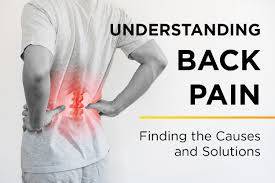Understanding the Causes of Severe Back and Waist Pain
Severe back and waist pain is a common complaint that can significantly impact an individual’s quality of life. This discomfort can arise from various sources, including lifestyle choices, medical conditions, and injuries. Understanding the underlying causes is essential for effective treatment and prevention.
1. **Muscle Strain and Ligament Sprains**
One of the most frequent causes of back and waist pain is muscle strain or ligament sprain. These injuries often occur due to heavy lifting, sudden awkward movements, or prolonged poor posture. Over time, repetitive stress can lead to microtears in the muscles and ligaments supporting the spine, resulting in inflammation and pain. Individuals who engage in manual labor or are sedentary are particularly susceptible to these types of injuries.
2. **Herniated Discs**
Herniated discs occur when the soft material inside the spinal disc pushes out through a tear in the outer layer. This condition can compress nearby nerves, leading to severe pain that may radiate down the legs. Factors such as aging, obesity, and genetic predisposition can increase the risk of disc herniation. Symptoms often include sharp pain, numbness, or weakness in the extremities, making it critical to seek medical advice if these symptoms arise.
3. **Arthritis**
Arthritis is another major contributor to back and waist pain, particularly in older adults. Conditions like osteoarthritis and rheumatoid arthritis can lead to inflammation of the joints in the spine, causing stiffness, swelling, and pain. As the cartilage wears down, bone spurs may develop, further complicating movement and leading to chronic discomfort. Managing arthritis often requires a combination of medication, physical therapy, and lifestyle adjustments.
4. **Skeletal Conditions**
Various skeletal conditions, including scoliosis and osteoporosis, can lead to back pain. Scoliosis, characterized by an abnormal curvature of the spine, may cause uneven pressure on the spine and muscles, leading to discomfort. Osteoporosis, a condition that weakens bones, increases the risk of fractures in the spine, resulting in acute pain. Regular screenings and proactive management can help mitigate these issues.
5. **Injuries and Trauma**
Injuries from accidents or falls can cause immediate and severe back pain. Whiplash from vehicle collisions, sports injuries, or even slip and fall incidents can lead to significant strain on the back. These injuries often necessitate prompt medical evaluation and treatment, including imaging studies to assess the extent of damage.
6. **Lifestyle Factors**
Sedentary lifestyles, poor ergonomics at work, and inadequate physical activity contribute significantly to back pain. Sitting for prolonged periods, especially with poor posture, places excess pressure on the spine. Conversely, excessive physical activity without proper conditioning can lead to muscle strain. Incorporating regular exercise, such as strength training and flexibility exercises, can help maintain a healthy back.
7. **Obesity**
Excess body weight places additional strain on the spine and surrounding muscles. Obesity can exacerbate existing conditions, such as arthritis, and can also lead to an increased risk of developing back pain. Weight management through a balanced diet and regular exercise is crucial for reducing the risk of back-related issues.
8. **Stress and Mental Health**
Mental health plays a significant role in physical health, including back pain. Stress can lead to muscle tension, particularly in the neck and back, which can exacerbate pain. Anxiety and depression are often linked to chronic pain conditions, creating a cycle that can be difficult to break. Addressing mental health through therapy, mindfulness, and stress reduction techniques can be beneficial for managing back pain.
9. **Medical Conditions**
Certain medical conditions, such as kidney stones, infections, or tumors, can also manifest as back and waist pain. These conditions may require specialized medical treatment, and it’s crucial to seek prompt medical attention if pain is accompanied by other symptoms like fever, unexplained weight loss, or changes in bowel or bladder function.
Conclusion
Severe back and waist pain can stem from a multitude of causes, ranging from mechanical issues to lifestyle factors and underlying health conditions. Understanding these causes is essential for effective treatment and prevention. Individuals experiencing persistent or severe pain should consult healthcare professionals for a comprehensive evaluation and personalized treatment plan. Addressing the root causes, whether through physical therapy, lifestyle changes, or medical interventions, can help restore function and improve overall well-being.


